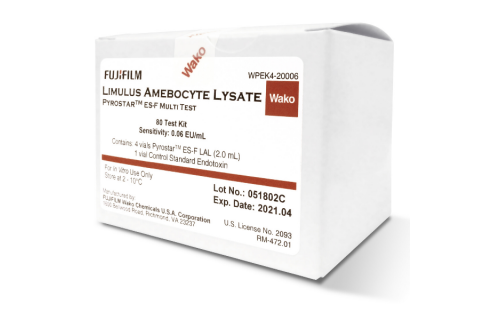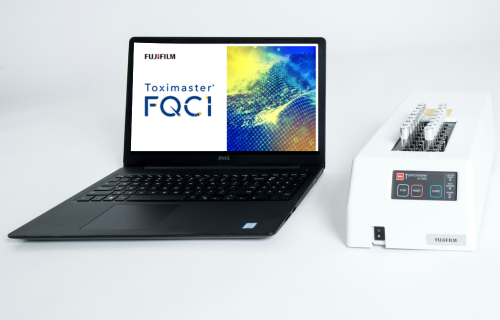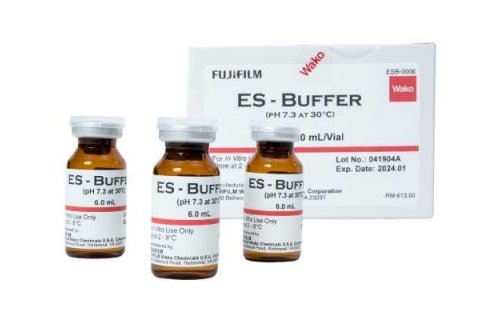The Impact of Endotoxin on the Human Body
Sepsis is a major global health issue, with approximately 50 million cases and 11 million deaths reported worldwide based on a World Health Organization (WHO) study published in 2020. Sepsis leads to approximately 1.7 million adult hospitalizations in the United States annually, with about 350,000 resulting in either hospital deaths or transfers to hospice care.[1]
Lipopolysaccharide (LPS), which makes up the outer membrane of Gram-negative bacteria, is an extremely powerful endotoxin that causes organ dysfunction in sepsis. This can be found in the bloodstream in a variety of infections, including Gram-negative, Gram-positive bacterial and fungal infections.[2]
When endotoxins contact the human body, they trigger various biological responses like pyrogenicity, leucocytosis, platelet aggregation, depression of blood pressure and leukopenia.[3]
Pathogenesis of endotoxins on the human body
Administering isolated endotoxin into experimental animals triggers a wide range of biological responses, similar to those observed during Gram-negative septic shock.
The biological activities of LPS are not solely caused by the LPS molecule itself, but they are indirectly triggered by endogenous mediators that are generated after the interaction of endotoxin.[3]
How transmission of endotoxin occurs?
Medical equipment, IV medications, saline solutions, implants, grafts, and sterilizing water are susceptible to contamination throughout the manufacturing process. According to the FDA (1985), endotoxin contamination can originate from various sources, such as water used as a solvent, water used in instrument cleaning and terminal reprocessing, packaging components, and raw materials or equipment used during production. Direct contact with the bloodstream can occur through these equipment and solutions, potentially contaminating the human body.
Prevention from contamination
Conducting initial level testing can help prevent contamination from endotoxins and their deadly consequences. Various reagents, methods, and devices are available for performing endotoxin or pyrogen testing on medical devices. In the past, the Rabbit Pyrogen Testing (RPT) was used to identify endotoxins. However, it has now been replaced by LAL assays, which provide more precise outcomes. More accurate and suitable methods like the MAT (Monocyte Activation Test) technique are currently being introduced.
The Limulus Amebocyte Lysate Assay (LAL)
The Limulus Amebocyte Lysate Assay, alternatively referred to as the Bacterial Endotoxin Test (BET), is the most frequently used assay for pyrogen testing. This testing method is not only cost-effective, but also widely acknowledged. The test entails the combination of lysate made from limulus blood, and bacterial endotoxin to generate a gel clot. The current kinetic LAL test kits employ either the turbidimetric or chromogenic characteristics of this combination for their testing objectives. The LAL test has been scientifically validated to possess five times greater sensitivity compared to the Rabbit Test in the detection of pyrogens.[4]
MAT (Monocyte Activation Test)
The main purpose of the MAT is to detect and measure both endotoxin and non-endotoxin pyrogenic contaminants. The presence of these contaminants can lead to the activation of human monocytes, causing the release of natural mediators[5]. In the MAT, human monocytic cells are subjected to in vitro exposure to pyrogens, thereby inducing cell activation. This activation triggers the release of proinflammatory cytokines, which are subsequently quantified using the ELISA technique[6].
The MAT demonstrates greater physiological relevance due to its utilization of human cells. Additionally, this detection system possesses the capability to accurately identify and quantify both endotoxin and non-endotoxin pyrogens [7].
Detecting endotoxins is of Utmost Importance
Improper monitoring of endotoxin contamination can result in lethality and fatality. The importance of implementing a precise method for endotoxin testing cannot be underestimated in mitigating the consequences of infection. Wako PYROSTAR™ offers a range of FDA compliant and pyrogen-free testing devices, accessories, and reagents that ensure precise and reliable outcomes.
References
- CDC. What is sepsis? 2023 [cited 2024; Available from: https://www.cdc.gov/sepsis/about/?CDC_AAref_Val=https://www.cdc.gov/sepsis/what-is-sepsis.html.
- Śmiechowicz, J., The Rationale and Current Status of Endotoxin Adsorption in the Treatment of Septic Shock. J Clin Med, 2022. 11(3).
- Galanos, C. and M.A. Freudenberg, Bacterial endotoxins: biological properties and mechanisms of action. Mediators Inflamm, 1993. 2(7): p. S11-6.
- Karesh, S.M.J.J.o.n.m.t., Sterility and pyrogen testing of radiopharmaceuticals. 1989. 17(3): p. 156-159.
- Solati, S., T. Zhang, and S. Timman, The monocyte activation test detects potentiated cytokine release resulting from the synergistic effect of endotoxin and non-endotoxin pyrogens. Innate Immun, 2022. 28(3-4): p. 130-137.
- Perdomo-Morales, R., et al., Monocyte activation test (MAT) reliably detects pyrogens in parenteral formulations of human serum albumin. Altex, 2011. 28(3): p. 227-35.
- Carson, D., et al., Development of a Monocyte Activation Test as an Alternative to the Rabbit Pyrogen Test for Mono- and Multi-Component Shigella GMMA-Based Vaccines. 2021. 9(7): p. 1375.






